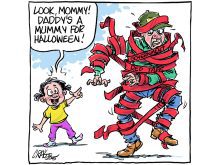Agriculture minister Lyle Vanclief earned a lot of praise when he announced in mid-December that there would be $1.5 billion in federal and provincial aid for grain and hog producers.
The praise-givers, however, might well be wondering whether they made a mistake. Perhaps the minister, having already achieved his moment of glory, feels he doesn’t need to do anything more.
It’s well over a month later, and individual producers still don’t know how much they can expect, or when they’ll get it.
One official said farmers should get details of the aid program by the end of February, but no cheques would be issued before June.
Read Also

Farmer ownership cannot be seen as a guarantee for success
It’s a powerful movement when people band together to form co-ops and credit unions, but member ownership is no guarantee of success.
Meanwhile, some provincial governments are still balking at putting up their 40-percent share of the program.
This is simply not good enough.
Although one Saskatchewan daily recently screamed “Hog prices double” in a banner front-page headline, all that means is that some producers are losing $40 a hog instead of $80.
Grain producers, meanwhile, are getting close to the point where they have to make crop decisions and order spring seeding inputs.
That doesn’t involve small change. According to Statistics Canada, the average Canadian grain and oilseed farm had $105,000 in expenses in 1997, not counting any wages paid to family members. Many prairie farms, of course, would have considerably higher expenses.
With generous, patient and helpful lenders, maybe some producers could wait until June to receive aid. But what bank or credit union can responsibly make loans on the basis of vague promises of some sort of general aid that might or might not apply to a particular producer?
Jack Wilkinson, president of the Canadian Federation of Agriculture, summed it up well last week in an open letter to farmers:
“Today, farmers still have little detail about how the program will be managed and therefore how and when it will be delivered. A month after the Minister’s announcement, there is nothing that can be considered remotely close to being ‘bankable.’
“The federal and provincial bureaucracies appear to be more concerned about turf warfare than the farmers’ welfare. …The time for federal-provincial bargaining is over. Bureaucrats need to make the decisions that are going to move this issue ahead.”
Farmers need to act now, Wilkinson said: “Call your MP, call your MPP or your MLA, and call your Minister of Agriculture today.”
That’s timely advice.














